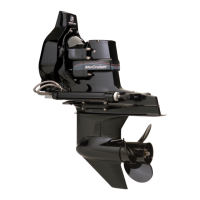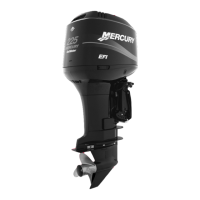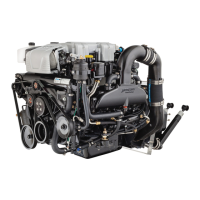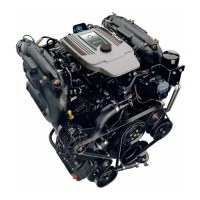Section 4 - Maintenance
90-8M0113986 eng DECEMBER 2015 Page 41
3. The coolant level in the coolant expansion tank should be within25 mm (1 in.) of the top of the fill neck.
2.0L (engine cover removed)
a - Pressure cap
b - Coolant expansion tank
c - Coolant fill neck
IMPORTANT: Use only the specified coolant. The coolant must be mixed with water at the ratio specified in Section 4–
Antifreeze/Coolant.
Tube Ref No. Description Where Used Part No.
122
Extended Life Antifreeze/Coolant Closed-cooling system 92-877770K1
4. If the coolant level is low:
a. Inspect the coolant recovery system for leaks.
b. Inspect the gasket in the pressure cap for damage and replace if necessary.
a - Gasket
c. The pressure cap maintains pressure on the cooling system and may not be holding pressure properly. To have the
cap tested, contact your Mercury Diesel authorized repair facility.
5. Slowly add the coolant within 25 mm (1 in.) of the top of the expansion tank filler neck.
6.
If the boat is out of the water, both the engine and sterndrive must be supplied with cooling water. Refer to Flushing the
Seawater System section of this manual.
NOTICE
Without sufficient cooling water, the engine, the water pump, and other components will overheat and suffer damage. Provide
a sufficient supply of water to the water inlets during operation.
7. Do not install the pressure cap. Start and operate the engine at fast idle speed between 600–1400 RPM. Add coolant as
necessary to maintain the coolant at the level specified previously.
8. Install the pressure cap after the engine has reached normal operating temperature (with the thermostat fully open) and the
coolant level remains constant.
IMPORTANT: When installing the pressure cap, be sure to tighten it securely to avoid coolant loss.
9. Test the engine operation. Observe the temperature gauge and check the engine for coolant leaks. If the temperature
gauge indicates the presence of excessive temperature or coolant is leaking, stop the engine immediately and inspect for
the cause.
10. After the first operation, allow the engine to cool.
14142
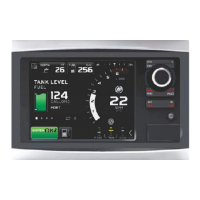
